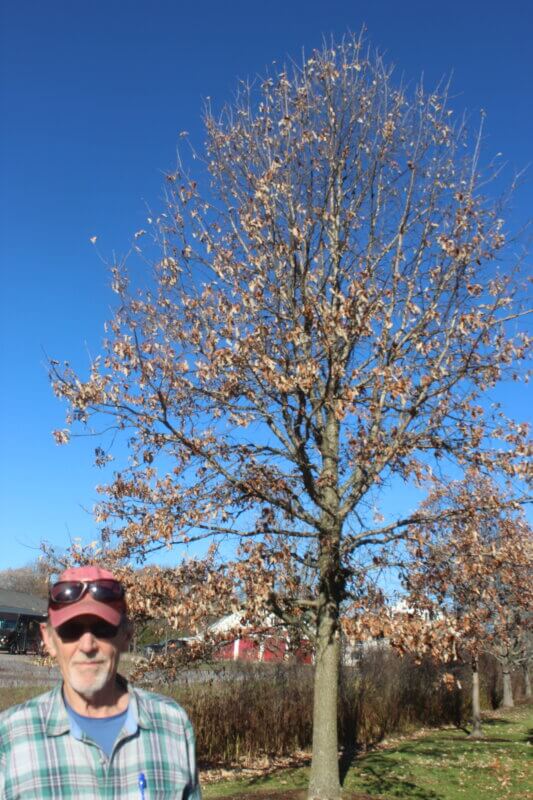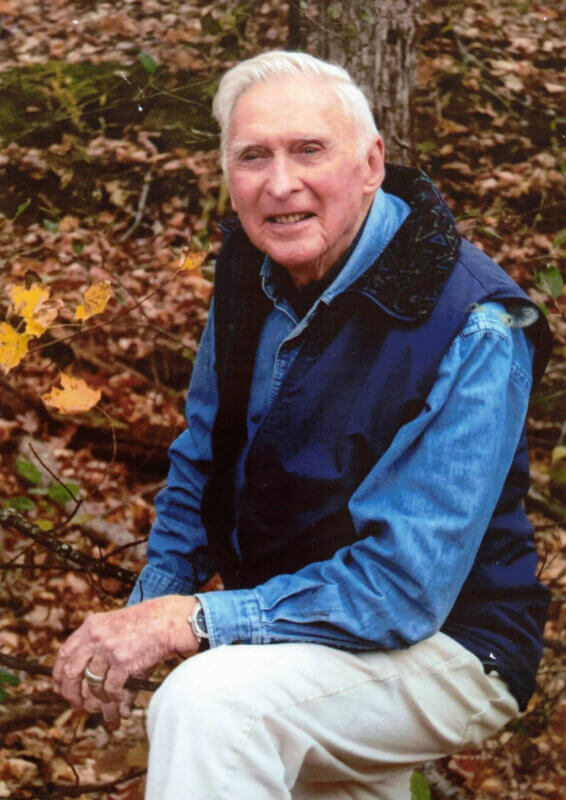A town that loves trees
Charlotte is a town that’s proud of its trees. You might even go so far as to say it’s a tree-huggin’ town.
With Arbor Day in Vermont this Friday, May 5, this is a good time to talk about the town’s relationship with its trees.
Gwen Kozlowski of the Vermont Urban & Community Forestry Program said most of the United States celebrated Arbor Day on April 28, the last Friday in April. In Vermont it’s the first Friday in May. The celebration is timed to when it’s usually best to plant trees, so it comes a little later in the Green Mountain State.
Many countries celebrate some version of Arbor Day, or Arbour Day. It’s believed that the first celebration of trees was in Mondoñedo, Spain, in 1594.

Charlotte celebrates trees year around, and uniquely among Vermont towns, it maintains two lists of significant trees in the town — the Hamilton Champion Tree Roster and the Memorial and Dedicated Trees list. Most towns and the state maintain a champion tree roster, a list of the biggest trees of each species in a town, whether on private or public property.
But Charlotte also maintains a list of trees that have been planted around town in places like the Charlotte Town Green, the Charlotte Museum, the Barber Cemetery, the town beach and at town ballfields. The trees on the Memorial and Dedicated Trees list have been planted to honor such things as the new millennium, Arbor Day and Green Up Day, and to remember such people as friends, relatives and town notables like long-time town constable Hugh “Cowboy” Lewis and Larry Hamilton.
Hamilton is noteworthy because it is likely that without him Charlotters wouldn’t be as passionate about their trees. There probably wouldn’t have been more than 40 memorial trees planted in town. It’s unlikely that Charlotte would have an active group of volunteers who work to keep the champion tree roster up-to-date and work for the propagation and protection of the town’s beloved trees.
Without Hamilton’s 21 years of proselytizing for trees as town tree warden, it’s a safe bet that the town wouldn’t have the Rutter Tree Fund. The late Bill Rutter, who had a place on Thompson’s Point, established the fund with a $50,000 donation, and his descendants and others have continued to donate to tree planting in Charlotte.
The fund has just over $6,000, said tree warden Mark Dillenbeck, who naturally would like to see the current tree currency grow. “We’d like to reach out and get ideas from people in town about where they’d like to see more trees. We’re looking for financial support to support tree planting in the future.”
The tree volunteers were once known as the Tree Tribe, but the group is considering changing to a term that doesn’t seem like cultural appropriation. Maybe Tree Keepers.
Dillenbeck said the tree volunteers have recently been planting trees in the Charlotte Park and Wildlife Refuge and would love to replenish the coffers.
The group works to keep the tree efforts as “a community thing,” Dillenbeck said, trying to get volunteer help and donations so trees don’t cost the town anything.
Because of the Rutter family and others who have donated to the fund, around 500 trees have been planted around town over the years.

In recent years, tree planting has been slowed by COVID, but the group looks to get back to the propogating of trees in a big way. Another activity the pandemic has put a kibosh on is Arbor Day celebrations at Charlotte Central School.
During Hamilton’s 21 years as Charlotte’s tree warden, Linda Hamilton said her late husband really appreciated the fun part of being the tree warden, which for him was outreach, promoting trees on Arbor Day at the school and recruiting an enthusiastic group of volunteers to plant, tend and advocate for trees.
For many years, her husband recruited Charlie Proutt of Distinctive Landscaping and Horsford Garden and Nursery to donate a tree which the students helped plant. The kids were also given a quiz on trees. There’s a number of trees at the school that were planted on Arbor Day in the past.
And most years the selectboard issued a proclamation recognizing the holiday.
Another thing that has cut down on Arbor Day celebrating is the emerald ash borer. Much of Dillenbeck’s focus has been on the insect that’s decimating ash trees. Dillenbeck said the insect has not been found in Charlotte yet, but it’s possible it’s already arrived and hasn’t been found. The emerald ash borer has been confirmed as close as Essex.
Before there was a tree warden, the road commissioner functioned in that role, Linda Hamilton said. Since one of the road commissioners’ primary responsibilities is keeping roads clear, most of their focus was on cutting sketchy trees in the right of way, not planting them.
Although the tree warden’s official responsibility is to trees on public land, Larry Hamilton did encourage landowners to plant trees, particularly along roads to promote a vibrant tree corridor in Charlotte.
When Larry Hamilton died in the fall of 2016, he and Linda had been married almost 40 years. They met at Cornell when she was working on her master’s in natural resources policy and planning, and she took his forest ecology course.
“He was a much-admired teacher. He had more graduate students than anybody else because he took a holistic approach and really worked with students individually,” she said. He was known for encouraging students to become multi-dimensional professionals, so he might motivate them to also take courses in literature, history or art appreciation.
One of Larry Hamilton’s favorite trees was the American beech, Linda said, and his students lovingly dubbed him “a true son of a beech.”
People in town really do appreciate, admire and respect trees, and she believes her late husband had a big influence on cultivating Charlotters’ engagement with trees. He helped residents to think of trees as more than just shade.
“Trees are not solitary,” Linda Hamilton said. “We plant them in our yards, thinking it’s an item. It’s one spruce or something. But actually, they are forest trees that we have around here, and they do best with more individuals of their own species and individuals of a suite of species.”
One lasting evidence of Larry Hamilton’s work for trees in Charlotte is the Williams Woods Natural Area, 63 acres of old-growth clayplain forest that has been preserved by The Nature Conservancy on Greenbush Road almost 3 miles south of Ferry Road.
After high winds downed trees in Williams Woods, Hamilton convinced The Nature Conservancy to leave them alone and let the forest recover on its own.
Larry Hamilton died of cancer that came on him suddenly in 2016, Linda said, and he died eight weeks after his diagnosis. Several people commented on how he was working in the woods until just weeks before his death.
The Nature Conservancy and the Charlotte Selectboard rushed to get a proclamation out. He died 24 hours after being taken to Hospice.
While Hamilton was in the hospital he got a call from Lane Morrison, who was chair of the selectboard then. When Morrison told him the trail in Williams Woods had been named the Hamilton Trail, Larry Hamilton said, “I have 300 academic publications with my name on it. They pale in comparison to the pleasure I feel and how it warms my heart to know that in this protected forest my name is on the trail.”

